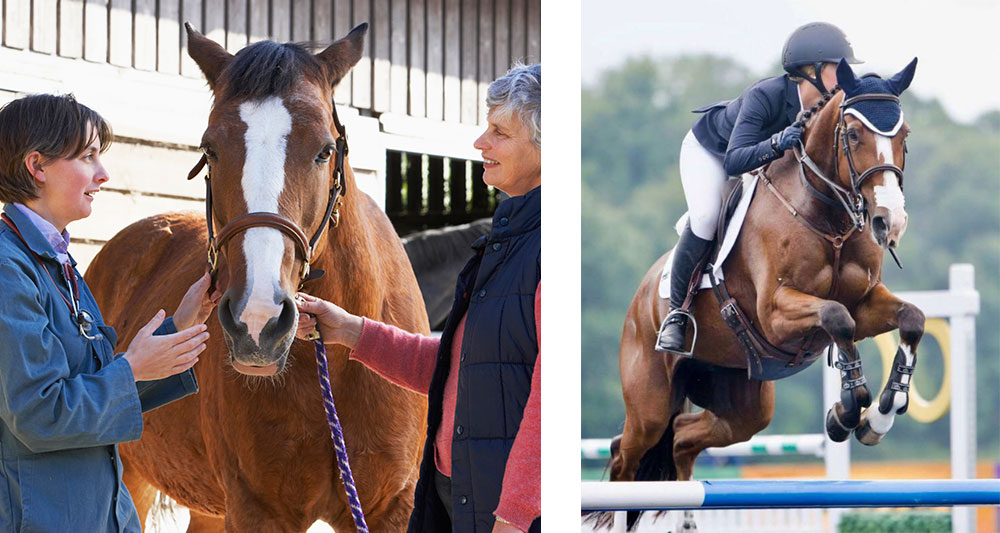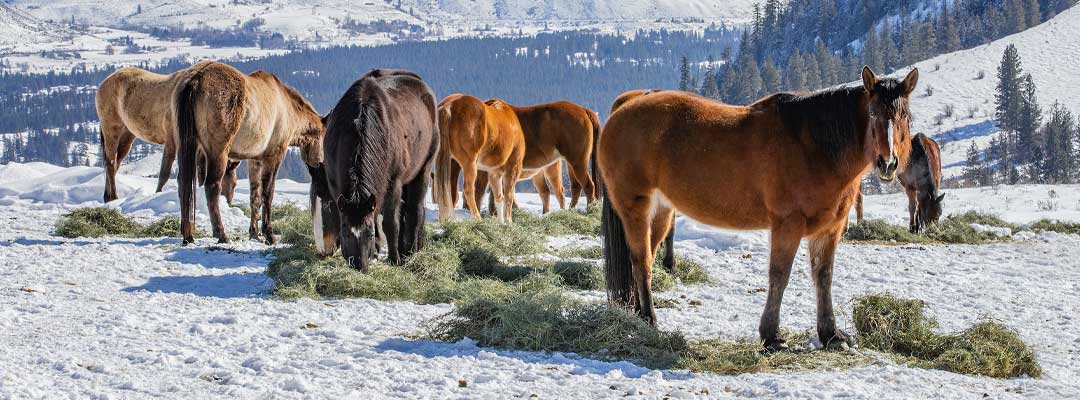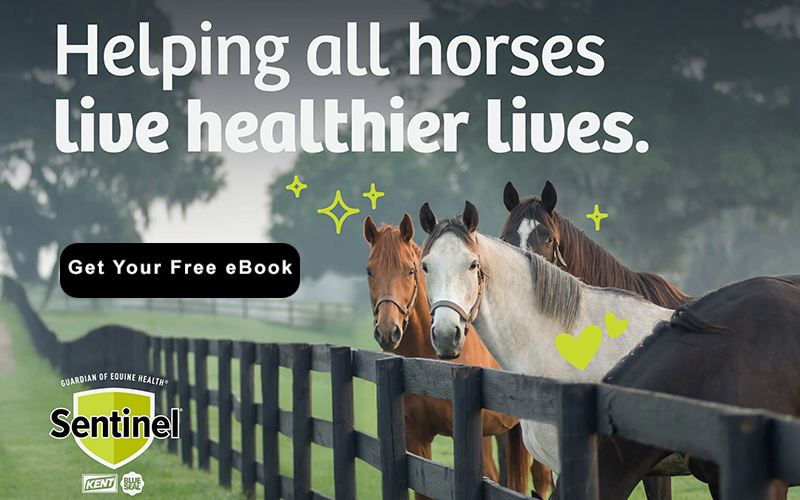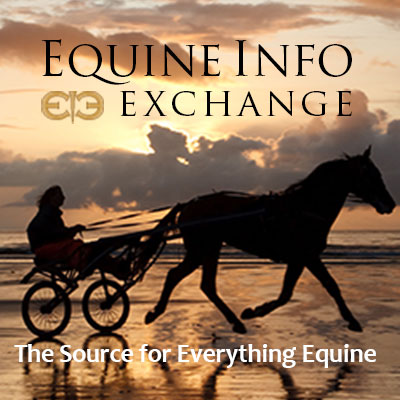Health & Education
We all want the best care possible for our horses. The Heath & Education section covers both Learning Institutions, Organizations as well as many sources for equine assistance including Veterinarians and Farriers.
For those who want a to formally study horses, the Education section includes College Riding, Equine Studies, and Veterinary Schools. Learn about the wide variety of horses in the Horse Breeds section. Supplements and Treatments Therapy are also included in the section.
Everyone can learn from Fine Art and there are some specialty Museums that might surprise you.
Horses as a therapy partner enrich the lives of the disabled. These facilities are listed in our Therapeutic Riding section. To help children and young adults build confidence and grow emotionally, please see the resources available on the Youth Outreach page.
Looking for a place to keep your horse? You can find it in the Horse Boarding section. Traveling? Find a Shipping company or Horse Sitting service if your horse is staying home!
Want to stay up to date with the latest training clinics or professional conferences? Take a look at our Calendar of Events for Health & Education for the dates and locations of upcoming events.
Do we need to add more? Please use the useful feedback link and let us know!

Veterinarians in Utah
- Arcadia Veterinary Clinic, 90 Lloyd Lane, Heber City, UT 84032
- Bear River Animal Hospital, 390 W. 600 North, Tremonton, UT 84337
- Bridgerland-Cache Animal Hospital, 95 W 900 N, Logan, UT 84321
- Kanab Veterinary Hospital, 6676 US-89, Kanab, UT 84741
- Moab Veterinary Clinic, 4575 Spanish Valley Dr., Moab, UT 84532
- Mountain Point Equine Hospital, 14005 S Loumis Parkway, Bluffdale, UT 84065
- Park City Equine, 2333 500 E, Heber City, UT 84032
- Rocky Mountain Large Animal Clinic Inc., 3226 N 1150 West, Spanish Fork, UT 84660
- South Valley Equine, Main Hospital & Reproduction Center, 122 W. 400 N., Saratoga Springs, UT 84045
- South Valley Equine, Northern Utah Clinic, 1892 W. Heritage Ranch Dr., Farr West, UT 84404
- Tooele Veterinary Clinic, 1182 N. 80 E. Tooele, Utah 84074
- Wasatch Animal Clinic, 895 W 100 S Heber City, UT 84032
- West Mountain Veterinary Hospital, 143 W 900 N, Payson, UT 84651-1700
When looking for a horse veterinarian, prioritize their experience with horses, relevant certifications, good horse handling skills, a confident and calm demeanor, access to specialists for complex cases, a clear communication style, and positive recommendations from other horse owners in your area; also consider their availability, practice setup, and pricing structure to ensure they fit your needs.
Key qualities
Equine specific expertise: Ensure the vet has significant experience treating horses, as equine medicine differs from other animal practices.
Relevant certifications: Check if the vet holds certifications from organizations like the American Association of Equine Practitioners (AAEP) or has additional specialties like lameness, dentistry, or reproduction.
Good horse handling skills: A skilled vet should be comfortable and confident around horses, handling them calmly during procedures.
Communication skills: Choose a vet who explains diagnoses and treatment plans clearly and answers your questions thoroughly.
Access to specialists: Consider if the vet has a network of specialists they can refer to for complex cases.
Reputation and referrals: Ask other horse owners in your area for recommendations about the vet's competence and reliability.
Other factors to consider
Practice setup: Decide if you prefer a solo practitioner or a larger clinic with multiple vets depending on your needs.
Availability: Check the vet's practice hours and on-call availability for emergencies.
Cost and pricing structure: Inquire about the vet's fees for routine procedures and potential treatments to ensure they fit your budget.
Facility and equipment: Evaluate the vet clinic's facilities, including the availability of necessary diagnostic tools and equipment.
An equine veterinarian is a veterinarian who specializes in the care of horses. They are trained to diagnose and treat a wide range of horse health problems, including:
- Lameness
- Digestive problems
- Respiratory problems
- Reproductive problems
- Infectious diseases
- Neurological disorders
- Surgical conditions
Equine veterinarians also play a role in preventive care for horses, such as vaccinations, deworming, and dental care.
Equine veterinarians are different from small animal veterinarians in a number of ways. First, equine veterinarians must have a strong understanding of horse anatomy and physiology. Horses are large animals, and their anatomy and physiology are different from those of small animals such as cats and dogs.
Second, equine veterinarians must be able to work with horses in a variety of settings, including farms, racetracks, and horse shows. This requires them to be able to handle horses safely and effectively.
Finally, equine veterinarians must be familiar with a wide range of horse breeds and disciplines. This is because different breeds of horses are prone to different health problems, and different disciplines place different demands on horses' bodies.
Here are some specific examples of the tasks that an equine veterinarian may perform:
- Perform physical examinations
- Diagnose and treat diseases and injuries
- Perform surgery
- Vaccinate horses
- Deworm horses
- Provide dental care
- Advise horse owners on nutrition and management
Equine veterinarians play an important role in the health and well-being of horses. They provide a wide range of services to help horses stay healthy and perform at their best.
Here are some of the key differences between equine veterinarians and small animal veterinarians:
- Species: Equine veterinarians specialize in the care of horses, while small animal veterinarians specialize in the care of cats and dogs.
- Anatomy and physiology: Horses are large animals with anatomy and physiology that is different from that of small animals. Equine veterinarians must have a strong understanding of horse anatomy and physiology in order to provide effective care.
- Work environment: Equine veterinarians often work in a variety of settings, such as farms, racetracks, and horse shows. Small animal veterinarians typically work in veterinary clinics or hospitals.
- Breeds and disciplines: Equine veterinarians must be familiar with a wide range of horse breeds and disciplines. Small animal veterinarians typically focus on a smaller range of breeds and disciplines.
Overall, equine veterinarians and small animal veterinarians play important roles in the health and well-being of animals. They are both highly skilled and knowledgeable professionals who are dedicated to providing the best possible care to their patients.
You can find more informative articles in our section on Health & Education. While you're here be sure to check out our Curated Amazon Store.

Veterinarians in Vermont
- Aeolus Animal Hospital and Equine Center, 145 Harmony Lane, Manchester Center, VT 05255
- Arlington Equine, 9 Church St., Arlington, VT 05250
- Burlington Equine Veterinary Services LLC, 248 Plouffe Lane, Charlotte, VT 05445
- Clover Acres Livestock Veterinary Services LLC, 73 Depot St., Proctorsville, VT 05153
- Cross Border Equine Center, 396 Parker Hill Road, Springfield, Vermont 05156
- Fieldstone Equine Clinic, 425 VT - 110, Tunbridge, VT 05077
- Meadowbrook Equine LLC, P.O. Box 175, Middlebury, VT 05753
- Sugar Run Equine Veterinary Services, 171 Stancliffe Rd., Morristown, VT 05661
- Three Rivers Equine Veterinary Service, P.O. Box 663, St. Johnsbury, VT 05819
- Upper Valley Equine Services, P.O. Box 767 Chester, VT 05143, US
- Vermont Large Animal Clinic, 1054 Lake Road, Milton, VT 05468
- Vermont New Hampshire Vet Clinic, 38 East West Road, East Dummerston, VT 05346
When looking for a horse veterinarian, prioritize their experience with horses, relevant certifications, good horse handling skills, a confident and calm demeanor, access to specialists for complex cases, a clear communication style, and positive recommendations from other horse owners in your area; also consider their availability, practice setup, and pricing structure to ensure they fit your needs.
Key qualities
Equine specific expertise: Ensure the vet has significant experience treating horses, as equine medicine differs from other animal practices.
Relevant certifications: Check if the vet holds certifications from organizations like the American Association of Equine Practitioners (AAEP) or has additional specialties like lameness, dentistry, or reproduction.
Good horse handling skills: A skilled vet should be comfortable and confident around horses, handling them calmly during procedures.
Communication skills: Choose a vet who explains diagnoses and treatment plans clearly and answers your questions thoroughly.
Access to specialists: Consider if the vet has a network of specialists they can refer to for complex cases.
Reputation and referrals: Ask other horse owners in your area for recommendations about the vet's competence and reliability.
Other factors to consider
Practice setup: Decide if you prefer a solo practitioner or a larger clinic with multiple vets depending on your needs.
Availability: Check the vet's practice hours and on-call availability for emergencies.
Cost and pricing structure: Inquire about the vet's fees for routine procedures and potential treatments to ensure they fit your budget.
Facility and equipment: Evaluate the vet clinic's facilities, including the availability of necessary diagnostic tools and equipment.
An equine veterinarian is a veterinarian who specializes in the care of horses. They are trained to diagnose and treat a wide range of horse health problems, including:
- Lameness
- Digestive problems
- Respiratory problems
- Reproductive problems
- Infectious diseases
- Neurological disorders
- Surgical conditions
Equine veterinarians also play a role in preventive care for horses, such as vaccinations, deworming, and dental care.
Equine veterinarians are different from small animal veterinarians in a number of ways. First, equine veterinarians must have a strong understanding of horse anatomy and physiology. Horses are large animals, and their anatomy and physiology are different from those of small animals such as cats and dogs.
Second, equine veterinarians must be able to work with horses in a variety of settings, including farms, racetracks, and horse shows. This requires them to be able to handle horses safely and effectively.
Finally, equine veterinarians must be familiar with a wide range of horse breeds and disciplines. This is because different breeds of horses are prone to different health problems, and different disciplines place different demands on horses' bodies.
Here are some specific examples of the tasks that an equine veterinarian may perform:
- Perform physical examinations
- Diagnose and treat diseases and injuries
- Perform surgery
- Vaccinate horses
- Deworm horses
- Provide dental care
- Advise horse owners on nutrition and management
Equine veterinarians play an important role in the health and well-being of horses. They provide a wide range of services to help horses stay healthy and perform at their best.
Here are some of the key differences between equine veterinarians and small animal veterinarians:
- Species: Equine veterinarians specialize in the care of horses, while small animal veterinarians specialize in the care of cats and dogs.
- Anatomy and physiology: Horses are large animals with anatomy and physiology that is different from that of small animals. Equine veterinarians must have a strong understanding of horse anatomy and physiology in order to provide effective care.
- Work environment: Equine veterinarians often work in a variety of settings, such as farms, racetracks, and horse shows. Small animal veterinarians typically work in veterinary clinics or hospitals.
- Breeds and disciplines: Equine veterinarians must be familiar with a wide range of horse breeds and disciplines. Small animal veterinarians typically focus on a smaller range of breeds and disciplines.
Overall, equine veterinarians and small animal veterinarians play important roles in the health and well-being of animals. They are both highly skilled and knowledgeable professionals who are dedicated to providing the best possible care to their patients.
You can find more informative articles in our section on Health & Education. While you're here be sure to check out our Curated Amazon Store.

Veterinarians in Virginia
- Allaround Equine Veterinary Care, Inc., Bedford, VA 24523
- Blue Ridge Equine Clinic, 4510 Mockernut Lane, Earlysville, VA 22936
- Blue Ridge Veterinary Associates, 120 East Cornwell Lane, Purcellville, VA 20132
- Broad Run Veterinary Service Inc., 33715 Snickersville Turnpike, Bluemont, VA 20135
- Casey Veterinary Services, 8625 Woodward Road, Marshall, VA 20116
- Clarke Equine Wellness and Performance, 1236 Kimble Road, Berryville, VA 22611
- Deepwood Veterinary Clinic, 7300 Ordway Road, Centreville, VA 20121
- Four Star Equine PLLC, 9644 S Congress St., New Market, VA 22844
- Hoof & Paw Veterinary Service Inc., 211 South 20th St., Purcellville, VA 20132
- Ken Pankow Equine Dentist, P.O. Box 235, Flint Hill, VA 22627
- Keswick Equine Clinic, 201 Taylor Avenue, Gordonsville, VA 22942
- Northern Virginia Equine, 8170 Patrickswell Lane, Marshall, VA 20115
- Old Dominion Equine Associates, 6539 Gordonsville Road, Keswick, VA 22947
- Old Waterloo Equine Clinic, 6136 Waterford Road, Rixeyville, VA 22737
- Pine Meadow Equine PC, 221 Yorktown Road, Yorktown, VA, 23693
- Solstice Equine Veterinary Services PLLC, 38707 Triticum Lane, Lovettsville, VA 20180
- Tally Oaks Veterinary Service, 19302 Silcott Springs Road, Purcellville, VA 20132
- Total Equine Veterinary Associates PC, 15660 Avebury Manor Place, Leesburg, VA 20176
- Westwood Animal Hospital LLC, 15 Miss Phillips Road, Staunton, VA 24401
- Woodside Equine Clinic, P.O. Box 989, 13011 Blanton Road, Ashland, VA 23005
When looking for a horse veterinarian, prioritize their experience with horses, relevant certifications, good horse handling skills, a confident and calm demeanor, access to specialists for complex cases, a clear communication style, and positive recommendations from other horse owners in your area; also consider their availability, practice setup, and pricing structure to ensure they fit your needs.
Key qualities
Equine specific expertise: Ensure the vet has significant experience treating horses, as equine medicine differs from other animal practices.
Relevant certifications: Check if the vet holds certifications from organizations like the American Association of Equine Practitioners (AAEP) or has additional specialties like lameness, dentistry, or reproduction.
Good horse handling skills: A skilled vet should be comfortable and confident around horses, handling them calmly during procedures.
Communication skills: Choose a vet who explains diagnoses and treatment plans clearly and answers your questions thoroughly.
Access to specialists: Consider if the vet has a network of specialists they can refer to for complex cases.
Reputation and referrals: Ask other horse owners in your area for recommendations about the vet's competence and reliability.
Other factors to consider
Practice setup: Decide if you prefer a solo practitioner or a larger clinic with multiple vets depending on your needs.
Availability: Check the vet's practice hours and on-call availability for emergencies.
Cost and pricing structure: Inquire about the vet's fees for routine procedures and potential treatments to ensure they fit your budget.
Facility and equipment: Evaluate the vet clinic's facilities, including the availability of necessary diagnostic tools and equipment.
An equine veterinarian is a veterinarian who specializes in the care of horses. They are trained to diagnose and treat a wide range of horse health problems, including:
- Lameness
- Digestive problems
- Respiratory problems
- Reproductive problems
- Infectious diseases
- Neurological disorders
- Surgical conditions
Equine veterinarians also play a role in preventive care for horses, such as vaccinations, deworming, and dental care.
Equine veterinarians are different from small animal veterinarians in a number of ways. First, equine veterinarians must have a strong understanding of horse anatomy and physiology. Horses are large animals, and their anatomy and physiology are different from those of small animals such as cats and dogs.
Second, equine veterinarians must be able to work with horses in a variety of settings, including farms, racetracks, and horse shows. This requires them to be able to handle horses safely and effectively.
Finally, equine veterinarians must be familiar with a wide range of horse breeds and disciplines. This is because different breeds of horses are prone to different health problems, and different disciplines place different demands on horses' bodies.
Here are some specific examples of the tasks that an equine veterinarian may perform:
- Perform physical examinations
- Diagnose and treat diseases and injuries
- Perform surgery
- Vaccinate horses
- Deworm horses
- Provide dental care
- Advise horse owners on nutrition and management
Equine veterinarians play an important role in the health and well-being of horses. They provide a wide range of services to help horses stay healthy and perform at their best.
Here are some of the key differences between equine veterinarians and small animal veterinarians:
- Species: Equine veterinarians specialize in the care of horses, while small animal veterinarians specialize in the care of cats and dogs.
- Anatomy and physiology: Horses are large animals with anatomy and physiology that is different from that of small animals. Equine veterinarians must have a strong understanding of horse anatomy and physiology in order to provide effective care.
- Work environment: Equine veterinarians often work in a variety of settings, such as farms, racetracks, and horse shows. Small animal veterinarians typically work in veterinary clinics or hospitals.
- Breeds and disciplines: Equine veterinarians must be familiar with a wide range of horse breeds and disciplines. Small animal veterinarians typically focus on a smaller range of breeds and disciplines.
Overall, equine veterinarians and small animal veterinarians play important roles in the health and well-being of animals. They are both highly skilled and knowledgeable professionals who are dedicated to providing the best possible care to their patients.
You can find more informative articles in our section on Health & Education. While you're here be sure to check out our Curated Amazon Store.

Veterinarians in Washington
When looking for a horse veterinarian, prioritize their experience with horses, relevant certifications, good horse handling skills, a confident and calm demeanor, access to specialists for complex cases, a clear communication style, and positive recommendations from other horse owners in your area; also consider their availability, practice setup, and pricing structure to ensure they fit your needs.
Key qualities
Equine specific expertise: Ensure the vet has significant experience treating horses, as equine medicine differs from other animal practices.
Relevant certifications: Check if the vet holds certifications from organizations like the American Association of Equine Practitioners (AAEP) or has additional specialties like lameness, dentistry, or reproduction.
Good horse handling skills: A skilled vet should be comfortable and confident around horses, handling them calmly during procedures.
Communication skills: Choose a vet who explains diagnoses and treatment plans clearly and answers your questions thoroughly.
Access to specialists: Consider if the vet has a network of specialists they can refer to for complex cases.
Reputation and referrals: Ask other horse owners in your area for recommendations about the vet's competence and reliability.
Other factors to consider
Practice setup: Decide if you prefer a solo practitioner or a larger clinic with multiple vets depending on your needs.
Availability: Check the vet's practice hours and on-call availability for emergencies.
Cost and pricing structure: Inquire about the vet's fees for routine procedures and potential treatments to ensure they fit your budget.
Facility and equipment: Evaluate the vet clinic's facilities, including the availability of necessary diagnostic tools and equipment.
An equine veterinarian is a veterinarian who specializes in the care of horses. They are trained to diagnose and treat a wide range of horse health problems, including:
- Lameness
- Digestive problems
- Respiratory problems
- Reproductive problems
- Infectious diseases
- Neurological disorders
- Surgical conditions
Equine veterinarians also play a role in preventive care for horses, such as vaccinations, deworming, and dental care.
Equine veterinarians are different from small animal veterinarians in a number of ways. First, equine veterinarians must have a strong understanding of horse anatomy and physiology. Horses are large animals, and their anatomy and physiology are different from those of small animals such as cats and dogs.
Second, equine veterinarians must be able to work with horses in a variety of settings, including farms, racetracks, and horse shows. This requires them to be able to handle horses safely and effectively.
Finally, equine veterinarians must be familiar with a wide range of horse breeds and disciplines. This is because different breeds of horses are prone to different health problems, and different disciplines place different demands on horses' bodies.
Here are some specific examples of the tasks that an equine veterinarian may perform:
- Perform physical examinations
- Diagnose and treat diseases and injuries
- Perform surgery
- Vaccinate horses
- Deworm horses
- Provide dental care
- Advise horse owners on nutrition and management
Equine veterinarians play an important role in the health and well-being of horses. They provide a wide range of services to help horses stay healthy and perform at their best.
Here are some of the key differences between equine veterinarians and small animal veterinarians:
- Species: Equine veterinarians specialize in the care of horses, while small animal veterinarians specialize in the care of cats and dogs.
- Anatomy and physiology: Horses are large animals with anatomy and physiology that is different from that of small animals. Equine veterinarians must have a strong understanding of horse anatomy and physiology in order to provide effective care.
- Work environment: Equine veterinarians often work in a variety of settings, such as farms, racetracks, and horse shows. Small animal veterinarians typically work in veterinary clinics or hospitals.
- Breeds and disciplines: Equine veterinarians must be familiar with a wide range of horse breeds and disciplines. Small animal veterinarians typically focus on a smaller range of breeds and disciplines.
Overall, equine veterinarians and small animal veterinarians play important roles in the health and well-being of animals. They are both highly skilled and knowledgeable professionals who are dedicated to providing the best possible care to their patients.
You can find more informative articles in our section on Health & Education. While you're here be sure to check out our Curated Amazon Store.

Veterinarians in West Virginia
- Allegheny Equine Veterinary Service, Route 1, Box 115, Elkins, WV 26241
- Broadway Veterinary Hospital, 117 So. Timber Way, Broadway, VA 22815
- Clara Mason DVM, 44 Cloverleaf St., Winfield,WV 25213
- Mountaiview Veterinary Services, 90 Southern Drive, Keyser, WV 26726
- Selby Veterinary Services, 43 Ruland Road, Suite I, Kearneysville, WV 25430
- Valley West & Elk Valley Equine Hospital, 301 Virginia St. W, Charleston, WV 25302
- Valley West & Elk Valley Equine Hospital, 319 Old Frame Road, Elkview, WV 25071
When looking for a horse veterinarian, prioritize their experience with horses, relevant certifications, good horse handling skills, a confident and calm demeanor, access to specialists for complex cases, a clear communication style, and positive recommendations from other horse owners in your area; also consider their availability, practice setup, and pricing structure to ensure they fit your needs.
Key qualities
Equine specific expertise: Ensure the vet has significant experience treating horses, as equine medicine differs from other animal practices.
Relevant certifications: Check if the vet holds certifications from organizations like the American Association of Equine Practitioners (AAEP) or has additional specialties like lameness, dentistry, or reproduction.
Good horse handling skills: A skilled vet should be comfortable and confident around horses, handling them calmly during procedures.
Communication skills: Choose a vet who explains diagnoses and treatment plans clearly and answers your questions thoroughly.
Access to specialists: Consider if the vet has a network of specialists they can refer to for complex cases.
Reputation and referrals: Ask other horse owners in your area for recommendations about the vet's competence and reliability.
Other factors to consider
Practice setup: Decide if you prefer a solo practitioner or a larger clinic with multiple vets depending on your needs.
Availability: Check the vet's practice hours and on-call availability for emergencies.
Cost and pricing structure: Inquire about the vet's fees for routine procedures and potential treatments to ensure they fit your budget.
Facility and equipment: Evaluate the vet clinic's facilities, including the availability of necessary diagnostic tools and equipment.
An equine veterinarian is a veterinarian who specializes in the care of horses. They are trained to diagnose and treat a wide range of horse health problems, including:
- Lameness
- Digestive problems
- Respiratory problems
- Reproductive problems
- Infectious diseases
- Neurological disorders
- Surgical conditions
Equine veterinarians also play a role in preventive care for horses, such as vaccinations, deworming, and dental care.
Equine veterinarians are different from small animal veterinarians in a number of ways. First, equine veterinarians must have a strong understanding of horse anatomy and physiology. Horses are large animals, and their anatomy and physiology are different from those of small animals such as cats and dogs.
Second, equine veterinarians must be able to work with horses in a variety of settings, including farms, racetracks, and horse shows. This requires them to be able to handle horses safely and effectively.
Finally, equine veterinarians must be familiar with a wide range of horse breeds and disciplines. This is because different breeds of horses are prone to different health problems, and different disciplines place different demands on horses' bodies.
Here are some specific examples of the tasks that an equine veterinarian may perform:
- Perform physical examinations
- Diagnose and treat diseases and injuries
- Perform surgery
- Vaccinate horses
- Deworm horses
- Provide dental care
- Advise horse owners on nutrition and management
Equine veterinarians play an important role in the health and well-being of horses. They provide a wide range of services to help horses stay healthy and perform at their best.
Here are some of the key differences between equine veterinarians and small animal veterinarians:
- Species: Equine veterinarians specialize in the care of horses, while small animal veterinarians specialize in the care of cats and dogs.
- Anatomy and physiology: Horses are large animals with anatomy and physiology that is different from that of small animals. Equine veterinarians must have a strong understanding of horse anatomy and physiology in order to provide effective care.
- Work environment: Equine veterinarians often work in a variety of settings, such as farms, racetracks, and horse shows. Small animal veterinarians typically work in veterinary clinics or hospitals.
- Breeds and disciplines: Equine veterinarians must be familiar with a wide range of horse breeds and disciplines. Small animal veterinarians typically focus on a smaller range of breeds and disciplines.
Overall, equine veterinarians and small animal veterinarians play important roles in the health and well-being of animals. They are both highly skilled and knowledgeable professionals who are dedicated to providing the best possible care to their patients.
You can find more informative articles in our section on Health & Education. While you're here be sure to check out our Curated Amazon Store.

Veterinarians in Wisconsin
- Animal Health Center SC, 1147 Boughton Street, Watertown, WI 53094
- Ashland Area Veterinary Clinic, 2700 Farm Road, Ashland, WI 54806
- Athens Veterinary Service, 625 West Limit Road, Athens, WI 54411
- Badger Veterinary Hospital, 3113 E. McCormick Dr., P.O. Box 2258, Janesville, WI 53547
- Bristol Vet Service, 17622 Burlington Road, Union Grove, WI 53182
- Brodhead Veterinary Medical Center, W1175 State Road 11-81, Brodhead, WI 53520
- Casserly Veterinary Services Inc., N8280 American St., P.O. Box 228, Ixonia, WI 53036
- Center Hill Veterinary Clinic, 11644 State Road 23, Darlington, WI 53530
- Country Care Animal Complex Inc., 4235 Elmview Road, Green Bay, WI 54311
- Country Veterinary Clinic, W1236 Saylesville Road, Rubicon, WI 53078
- Country View Veterinary Service, 1350 South Fish Hatchery Road, Post Office Box 27, Oregon, WI 53575
- Countryside Veterinary Clinic, 1231 N Knowles Ave., New Richmond, WI 54017
- Elkhorn Veterinary Clinic Ltd., 205 East O’Connor Drive, Elkhorn, WI 53121
- Fox Valley Veterinary Service, 231 South Millgate Drive, Burlington, WI 53105
- Frederic Veterinary Clinic, 108 Wisconsin Ave. South, P.O. Box 286, Frederic, WI 54837
- Fredonia Veterinary Clinic, W3919 Hwy H, Fredonia, WI 53021
- Grantsburg Animal Hospital, 886 S Pine St., PO Box 277, Grantsburg, WI 54840
- Great Lakes Equine Wellness Center, 651 Industrial Park Avenue, Hortonville, WI 54944
- Holistic Veterinary Options LLC, 13 Oxford Place, Madison, WI 53704
- Hoof & Paw Veterinary Clinic, 416 Oak Ave., Menomonie, WI 54751
- Irongate Equine Clinic, 1848 Waldorf Blvd., Madison, WI 53719
- Janesville Animal Medical Center, 5021 Wright Court, Milton, WI 53563
- Kettle Moraine Equine Hospital (KMEH), N8818 Highway 67, Whitewater, WI 53190
- Kiel Veterinary Clinic, SC 575 Belitz Drive, Kiel, WI 53042
- Lodi Veterinary Care, 705 North Main Street, Lodi, WI 53555
- Marshfield Veterinary Service, M249 Mann Road, Marshfield, WI 54449
- Naturally Balanced Veterinary Services LLC, 3372 Brookside Dr., Pulaski, WI 54162
- Pegasus Clinic Inc., W6744 Rogersville Road, Fond du Lac, WI 54937
- Spartan Animal Hospital, 4811 Larson Beach Road, McFarland, WI 53558
- Topline Equine Veterninary Care, 3087 130th Ave., Glenwood City, WI 54013
- University of Wisconsin, N6255 Church Road, Delavan, WI 53115
- Veterinary Associates LLC, 19922 U. S. Hwy 10, Reedsville WI, 54230
- Whitehall Veterinary Service, 19190 Hobson Street, P.O. Box 158, Whitehall, WI 54773
- Wisconsin Equine Clinic and Hospital, 39151 Delafield Road, Oconomowoc, WI 53066
- Wisconsin Valley Veterinary Service, 1605 Bovine Lane, Wausau, WI 54401
- Woodview Veterinary Clinic, 3284 Lighthouse Lane, West Bend, WI 53090
When looking for a horse veterinarian, prioritize their experience with horses, relevant certifications, good horse handling skills, a confident and calm demeanor, access to specialists for complex cases, a clear communication style, and positive recommendations from other horse owners in your area; also consider their availability, practice setup, and pricing structure to ensure they fit your needs.
Key qualities
Equine specific expertise: Ensure the vet has significant experience treating horses, as equine medicine differs from other animal practices.
Relevant certifications: Check if the vet holds certifications from organizations like the American Association of Equine Practitioners (AAEP) or has additional specialties like lameness, dentistry, or reproduction.
Good horse handling skills: A skilled vet should be comfortable and confident around horses, handling them calmly during procedures.
Communication skills: Choose a vet who explains diagnoses and treatment plans clearly and answers your questions thoroughly.
Access to specialists: Consider if the vet has a network of specialists they can refer to for complex cases.
Reputation and referrals: Ask other horse owners in your area for recommendations about the vet's competence and reliability.
Other factors to consider
Practice setup: Decide if you prefer a solo practitioner or a larger clinic with multiple vets depending on your needs.
Availability: Check the vet's practice hours and on-call availability for emergencies.
Cost and pricing structure: Inquire about the vet's fees for routine procedures and potential treatments to ensure they fit your budget.
Facility and equipment: Evaluate the vet clinic's facilities, including the availability of necessary diagnostic tools and equipment.
An equine veterinarian is a veterinarian who specializes in the care of horses. They are trained to diagnose and treat a wide range of horse health problems, including:
- Lameness
- Digestive problems
- Respiratory problems
- Reproductive problems
- Infectious diseases
- Neurological disorders
- Surgical conditions
Equine veterinarians also play a role in preventive care for horses, such as vaccinations, deworming, and dental care.
Equine veterinarians are different from small animal veterinarians in a number of ways. First, equine veterinarians must have a strong understanding of horse anatomy and physiology. Horses are large animals, and their anatomy and physiology are different from those of small animals such as cats and dogs.
Second, equine veterinarians must be able to work with horses in a variety of settings, including farms, racetracks, and horse shows. This requires them to be able to handle horses safely and effectively.
Finally, equine veterinarians must be familiar with a wide range of horse breeds and disciplines. This is because different breeds of horses are prone to different health problems, and different disciplines place different demands on horses' bodies.
Here are some specific examples of the tasks that an equine veterinarian may perform:
- Perform physical examinations
- Diagnose and treat diseases and injuries
- Perform surgery
- Vaccinate horses
- Deworm horses
- Provide dental care
- Advise horse owners on nutrition and management
Equine veterinarians play an important role in the health and well-being of horses. They provide a wide range of services to help horses stay healthy and perform at their best.
Here are some of the key differences between equine veterinarians and small animal veterinarians:
- Species: Equine veterinarians specialize in the care of horses, while small animal veterinarians specialize in the care of cats and dogs.
- Anatomy and physiology: Horses are large animals with anatomy and physiology that is different from that of small animals. Equine veterinarians must have a strong understanding of horse anatomy and physiology in order to provide effective care.
- Work environment: Equine veterinarians often work in a variety of settings, such as farms, racetracks, and horse shows. Small animal veterinarians typically work in veterinary clinics or hospitals.
- Breeds and disciplines: Equine veterinarians must be familiar with a wide range of horse breeds and disciplines. Small animal veterinarians typically focus on a smaller range of breeds and disciplines.
Overall, equine veterinarians and small animal veterinarians play important roles in the health and well-being of animals. They are both highly skilled and knowledgeable professionals who are dedicated to providing the best possible care to their patients.
You can find more informative articles in our section on Health & Education. While you're here be sure to check out our Curated Amazon Store.

Veterinarians in Wyoming
- Animal Medical Center of Wyoming, 200 E. Lakeway Road, Gillette, WY 82718
- Bear River Veterinary Clinic, 619 Almy Road 107, Evanston, WY 82930
- Blue Sky Animal Hospital, 26850 Kettle River Blvd., Wyoming, MN 55092
- Bluffs Vet Clinic, 722 West 7th Street, P.O. Box 550, Pine Bluffs, WY 82082
- Boulder Veterinary Clinic, 337 State Highway 353, Boulder, WY 82923
- Bridger Animal Hospital & Haystack Pet Resort, 127 Jepperson Road, P.O. Box 777, Thayne, WY 83127
- Carbon County Veterinary Hospital, 921 Airport Road, Rawlins, WY 82301
- Fish Creek Veterinary Clinic, P.O. Box 1814, 5325 3/B Ranch Road, Wilson, WY 83014
- Foothills Veterinary Services, 1937 Double Eagle Drive, Sheridan WY 82801
- Frontier Veterinary Clinic, 501 E. Riding Club Road, Cheyenne, WY 82009
- Laramie Peak Veterinary Associates, 28 W Frontage Road, Wheatland, WY 82201
- Mountainaire Animal Clinic, 1801 Yellowstone Road, Rock Springs, WY 82901
- Powder River Veterinary Hospital & Supply PC, 537 Sussex Lane, Kaycee, WY 82639
- Ten Mile Hoslitic Veterinary Care, 4701 W Yellowstone Hwy Mills, Casper, WY 82604-2209
- The Stock Doc, 3700 Riverview Road, Riverton, WY 82501
- Wyoming Equine Veterinary Practice, Bruce Connally DVM, 7364 Nebraska Way, Longmont, CO 80504
- Wyoming State Veterinary Laboratory, 1000 E. University Ave., Laramie, WY 82071
When looking for a horse veterinarian, prioritize their experience with horses, relevant certifications, good horse handling skills, a confident and calm demeanor, access to specialists for complex cases, a clear communication style, and positive recommendations from other horse owners in your area; also consider their availability, practice setup, and pricing structure to ensure they fit your needs.
Key qualities
Equine specific expertise: Ensure the vet has significant experience treating horses, as equine medicine differs from other animal practices.
Relevant certifications: Check if the vet holds certifications from organizations like the American Association of Equine Practitioners (AAEP) or has additional specialties like lameness, dentistry, or reproduction.
Good horse handling skills: A skilled vet should be comfortable and confident around horses, handling them calmly during procedures.
Communication skills: Choose a vet who explains diagnoses and treatment plans clearly and answers your questions thoroughly.
Access to specialists: Consider if the vet has a network of specialists they can refer to for complex cases.
Reputation and referrals: Ask other horse owners in your area for recommendations about the vet's competence and reliability.
Other factors to consider
Practice setup: Decide if you prefer a solo practitioner or a larger clinic with multiple vets depending on your needs.
Availability: Check the vet's practice hours and on-call availability for emergencies.
Cost and pricing structure: Inquire about the vet's fees for routine procedures and potential treatments to ensure they fit your budget.
Facility and equipment: Evaluate the vet clinic's facilities, including the availability of necessary diagnostic tools and equipment.
An equine veterinarian is a veterinarian who specializes in the care of horses. They are trained to diagnose and treat a wide range of horse health problems, including:
- Lameness
- Digestive problems
- Respiratory problems
- Reproductive problems
- Infectious diseases
- Neurological disorders
- Surgical conditions
Equine veterinarians also play a role in preventive care for horses, such as vaccinations, deworming, and dental care.
Equine veterinarians are different from small animal veterinarians in a number of ways. First, equine veterinarians must have a strong understanding of horse anatomy and physiology. Horses are large animals, and their anatomy and physiology are different from those of small animals such as cats and dogs.
Second, equine veterinarians must be able to work with horses in a variety of settings, including farms, racetracks, and horse shows. This requires them to be able to handle horses safely and effectively.
Finally, equine veterinarians must be familiar with a wide range of horse breeds and disciplines. This is because different breeds of horses are prone to different health problems, and different disciplines place different demands on horses' bodies.
Here are some specific examples of the tasks that an equine veterinarian may perform:
- Perform physical examinations
- Diagnose and treat diseases and injuries
- Perform surgery
- Vaccinate horses
- Deworm horses
- Provide dental care
- Advise horse owners on nutrition and management
Equine veterinarians play an important role in the health and well-being of horses. They provide a wide range of services to help horses stay healthy and perform at their best.
Here are some of the key differences between equine veterinarians and small animal veterinarians:
- Species: Equine veterinarians specialize in the care of horses, while small animal veterinarians specialize in the care of cats and dogs.
- Anatomy and physiology: Horses are large animals with anatomy and physiology that is different from that of small animals. Equine veterinarians must have a strong understanding of horse anatomy and physiology in order to provide effective care.
- Work environment: Equine veterinarians often work in a variety of settings, such as farms, racetracks, and horse shows. Small animal veterinarians typically work in veterinary clinics or hospitals.
- Breeds and disciplines: Equine veterinarians must be familiar with a wide range of horse breeds and disciplines. Small animal veterinarians typically focus on a smaller range of breeds and disciplines.
Overall, equine veterinarians and small animal veterinarians play important roles in the health and well-being of animals. They are both highly skilled and knowledgeable professionals who are dedicated to providing the best possible care to their patients.
You can find more informative articles in our section on Health & Education. While you're here be sure to check out our Curated Amazon Store.

Your horse feeding regimen will need to change in winter. Learn how so, from equine nutritionists and a veterinarian.
While impressively stout yet entirely fragile, horses require a great level of care, especially as it relates to their nutrition over the winter.
“Many horse owners may not realize they actually need to feed horses differently in the wintertime than they do in the summertime,” Jyme Nichols, PhD, director of nutrition at Stride Animal Health, shared in an interview with Valley Vet Supply.
For a better understanding, continue learning with these three facts and insights from equine nutrition experts, Dr. Nichols and Brittany Rahm, nutrition consultant at Stride Animal Health.
Fact 1: A Horse’s “Thermoneutral Zone” Directly Impacts Their Nutritional Needs.
“The first thing that I think is important for everybody to understand is a term that sounds a little bit intimidating -- thermoneutral zone,” Dr. Nichols said. “This is basically the temperature outside in which a horse can maintain their own core body temperature without having to exert any extra effort to regulate either their heat loss or heat gain.”
Horses in the United States have an average thermoneutral zone between 40 and 80 degrees, which means horses near the low end of their thermoneutral zone will have to use extra energy (thus calories) to maintain heat.
To identify whether your horse is outside of their thermoneutral zone, “You want to pay attention to whether or not they're using any natural defenses to that cold weather,” encourages Rahm.
These natural defenses can include:
- Shivering
- Standing with tail to the wind, head lowered
- Seeking shelter
Dr. Nichols followed up with, “Anytime you combine cold temperatures on top of moisture -- wind, ice and of course snow-- a horse will have to increase their heat production and will need to consume more calories. Additionally, young horses or underweight horses are going to hit that lower, critical temperature and get colder faster than a mature horse or a horse that's going into wintertime with really good body condition,” Dr. Nichols said.
An especially important detail for those traveling for competitions or pleasure with their horses is that it takes two weeks to a full month for horses to readapt to a new ambient temperature.
“When traveling, be mindful if you're going a long distance or to a region that has a very different temperature range than what you're coming from -- your horse may struggle a little bit more to retain heat or try to get rid of it -- depending whether you're going to a colder climate or a hotter climate,” said Dr. Nichols.
Fact 2: A Horse’s Feed Sources Will Help Them Maintain Warmth, in Addition to Weight.
It’s important to understand “metabolic heat production” as it relates to increasing a horse’s feed during cold temperatures.
Dr. Nichols explained, saying, “Think of a horse’s digestive system, or their hind gut, as a furnace. The more the microbes in the horse’s hind gut are able to digest and ferment -- especially fibers -- the more heat that can be generated for that horse. That's part of what goes into keeping them warm.”
Fact 3: As Weather Changes, So Should a Horse’s Diet, But Not in the Way Some May Think.
“A lot of times, people can get hung up thinking, ‘I need to change up [my horse’s] grain, or I need to change how much grain I feed,’” Dr. Nichols said. However, is either necessary? Not exactly, but there are some other aspects for horse owners to consider.
While a well-meaning sentiment, increasing grain can be harmful to a horse’s health -- heightening colic risk and more -- and secondly, doing so may not be enough to help a horse maintain their warmth when they need it most.
“Increasing the amount of hay is the best way to increase heat production and keep a horse warm during winter,” Dr. Nichols said. “Horses will naturally increase the amount of hay that they eat, based on the temperatures dropping.”
Regarding how much more hay to provide -- remember that the average thermoneutral zone for horses in the U.S. is between 40 and 80 degrees. Dr. Nichols said, as a general rule of thumb, for every one-degree Fahrenheit below the lower range of 40 degrees, horses will need an extra 200 calories.
“So, to put that in perspective, your average hay is going to have between 800 to 1,000 calories per pound. Let's say you've got a 10-degree drop -- you're going to need an extra 2,000 calories. All I did there was just take that 10 degrees times 200 calories, and that gets me to 2,000 calories, which is roughly 2 to 3 lbs. extra hay per day. So, if you're feeding small square bales of grass hay, that's probably going to be an extra flake, maybe an extra two flakes.”
Horse owners will need to increase their horse’s hay intake, but what about their grain? When the temperatures drop, upping feed is a common practice (but not recommended). Dr. Nichols shared two specific horse health examples, should horses be fed either a fortified feed or cereal grains, such as whole corn and oats.
Example 1, fortified feed increase -- say horsemen are feeding a fortified grain at a recommended level of 4 lbs. per day, then increase by 1 lb. per day. That feed is designed to meet all vitamin mineral requirements, amino acid requirements, etc., at 4 lbs. per day. While that extra pound may not be more harmful, it will provide some extra calories but the calories will be more quickly digested. This means the increased grain does not provide horses with long-term heat production, like hay does.
Example 2, cereal grain increase -- say horsemen are feeding a whole corn/oat mix at 4 lbs. per day and decide to double it. Corn and oats are really high in starches and sugars, which puts a really heavy load of sugar on the digestive tract that the small intestine can't digest very well, very quickly. You can then have an overspill of starch into the hind gut of the horse, impacting the balance of the good bacteria in that gut and presenting colic issues; it can also cause founder or laminitis issues in some horses.”
“You want to keep your grain level the same. If you're going to up anything, the most important thing to do is up that hay and consider a supplement that will keep them drinking, like Hydrate + Recover,” Rahm said.
For senior horses or horses with poor dental conditions, both Rahm and Dr. Nichols recommend feeding forage pellets, such as Timothy or alfalfa hay pellets, or even beet pulp shreds, which all have similar benefits as long-stem hay forage.
“For horses who are underweight, it is important to try to improve their body condition, which will support their thermoregulation and overall health. In addition to increasing their total hay intake, we recommend adding a high-quality protein and energy supplement to help support healthy weight gain,” said Tony Hawkins, DVM, technical service veterinarian at Valley Vet Supply.
Bundle up, stay safe, and keep in mind these three facts to help your horse weather the winter. Continue learning about horse care at ValleyVet.com.
All photos courtesy of Valley Vet.
This article originally appeared on Valley Vet and is published here with permission.
There are more informative articles in our section on Health & Education. Be sure to check out our Curated Amazon Store for Feed, Supplements and Horse Farm supplies.
"Is there anything I can do to prevent pregnancy loss in my mare?" presented by Dr. Mandi de Mestre, professor of biomedical sciences at the Baker Institute for Animal Health at #CornellVet, recorded November 21, 2023 via Zoom.
⚠️ Please note: This presentation includes equine pregnancy loss images that may be upsetting to some viewers. Please view at your own discretion.
In this seminar, Dr. de Mestre discusses the possible reasons why a mare suffers pregnancy loss, including which ones are the most commonly found in clinical cases of pregnancy loss and what you should be looking out for. She highlights new findings on novel genetic reasons a pregnancy might fail and how such cases can be identified. The talk ends with how we can use all this information in the management of mares to avoid or minimize the impact of pregnancy loss on mare fertility.
- QA With a Veterinarian: Horse Hoof Care
- Risk Management is a Must
- Correct Riding Helmet Adjustment with Julie Goodnight and Christy Landwehr (4:26)
- Horse Chiropractor
- Observing Horse Behavior in Restricted Grazing Scenarios
- Horse Acupuncture
- When EPM Strikes
- Evaluating Pasture Quality for Horses
- Winter Water Requirements for Horses
- Enjoy a More Serene Ride
- Lean Times, Lean Horses? Three Easy Ways Purina Can Help
- Purina's MQ Systemiq Probiotic Supplement
- Beyond Expectations - Book Trailer
- Finding My Stride with Therapeutic Riding - An Excerpt from Beyond Expectations
- Celebrity Supporters of the Seen Through Horses Campaign! (1:56)
- On to Safer Pastures: Protecting Horses from Poisonous Plants
- Survey Finds Half of Horse Owners Unaware of Lesser Known Stressors
- Study: Intestinal Microbiome of Foals May Predict Future Racing Success
- Intra-articular Approaches to Osteoarthritis - Cornell Equine Seminar (Oct 2024)
- What to Do When Your Horse Ride Goes Wrong

































